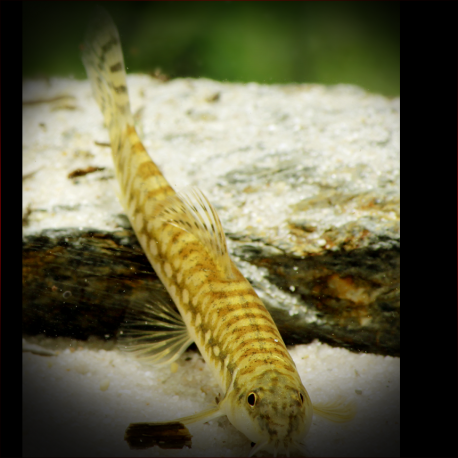More info
Datasheet
| Minimum Tank Size | 60 litres / 15.85 US gallons |
| Maximum Size | 6.0cm / 2.36inches |
| Temperature | 19°C / 66.20°F - 25.5°C / 77.90°F |
| Hardness | 2.02dgH / 36ppm - 12.05dgH / 215ppm |
| pH | 6.0-7.5 |
Behaviour
This species of loach can exhibit varying behavior in captivity, from peaceful to territorial and aggressive tendencies. The reasons for these differences remain unclear and caution is advised when introducing them to an established community tank. Some aquarists have found that providing a bare tank setup reduced aggression in some individuals. It is recommended to keep them with robust tankmates that inhabit similar biotopes in nature, avoiding smaller and delicate species that may not cope well with potential attacks. While they are generally tolerant of conspecifics and benefit from being kept in groups, they can display extreme territorial behavior in certain instances. Aquiring four or more specimens is advised based on their natural habitat observations, as they are often found in large aggregations.
Feeding and Diet
Mesonoemacheilus species are omnivorous, with their diet primarily consisting of small insects, worms, crustaceans, and zooplankton, supplemented with small amounts of plant matter. In captivity, they accept a variety of foods including live and frozen options like Daphnia, Artemia, and bloodworms for optimal coloration and health. It is recommended to offer a diverse diet and avoid feeding them exclusively dried foods.
Reproduction & Dimorphism
Information on the reproduction of Mesonoemacheilus guentheri in captivity is scarce, but successful breeding has been reported with closely related species. Male M. guentheri may exhibit sexual dimorphism by developing thickened pectoral fin rays with tubercules when mature, while females tend to be slightly larger and rounder when gravid. Breeding efforts with a compatible pair have involved the use of spawning mops and proper monitoring of the eggs and fry stages until they reach maturity.
Habitat and Distribution
Mesonoemacheilus guentheri is native to the rapids of the Nilgiri Hills in southern India and has been identified in regions such as the Periyar Tiger Reserve in the Cardamom Hills of Kerala. Their habitats typically include well-oxygenated, clear headwater streams and minor rivers with a substrate of sand, gravel, rocks, and boulders covered in algae and detritus. Aquatic plants are usually sparse in their environment, and they cohabit with various fish species such as Barilius, Devario, and Rasbora in the wild.
Aquarium Setup
To create an ideal tank environment for Mesonoemacheilus guentheri, it is recommended to replicate a flowing stream or river setting. The tank should have a substrate of rocks, sand, fine gravel, and some boulders, with driftwood for shelter and hiding spots. Hardy aquatic plants like Microsorum or Anubias can be added to the decor. High oxygen levels and moderate water movement are essential, requiring the use of power filters, powerheads, or airstones. Maintenance should include regular water changes to ensure optimal water quality for these loaches.
Etymology
The genus name, Mesonoemacheilus, is derived from the Greek words meaning 'half,' 'thread,' and 'lip,' referring to the less deeply-furrowed lips compared to other similar genera. The species epithet, guentheri, honors Dr. A. Günther for his contributions to the field of ichthyology.
Distribution
Mesonoemacheilus guentheri is found in the Western Ghats mountain range, primarily in southern India, with reported sightings in the Nilgiris Biosphere Reserve as well as the Cardamom Hills. They are part of the Nemacheilidae family, which is distributed across Eurasia, with high species diversity in regions like the Indian subcontinent, Southeast Asia, and China.
Overall, the Mesonoemacheilus guentheri is a fascinating species of loach with distinctive behavior patterns, dietary preferences, and habitat requirements that make them a unique addition to a well-maintained aquarium setup.

